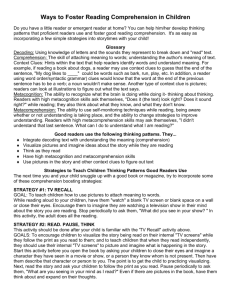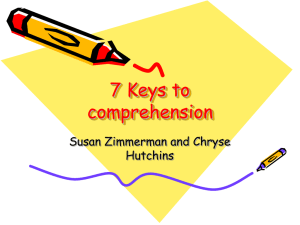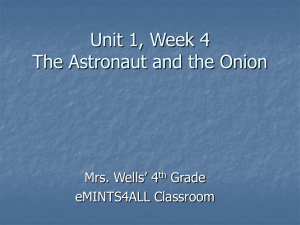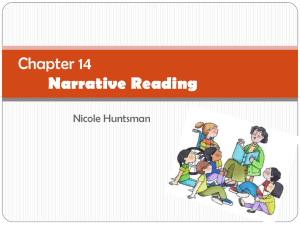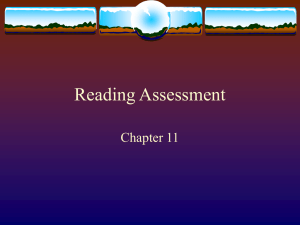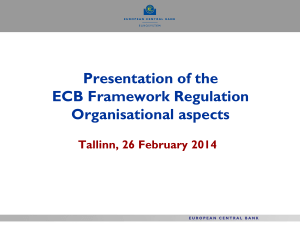Reading Comprehension - the Heights Elementary School
advertisement
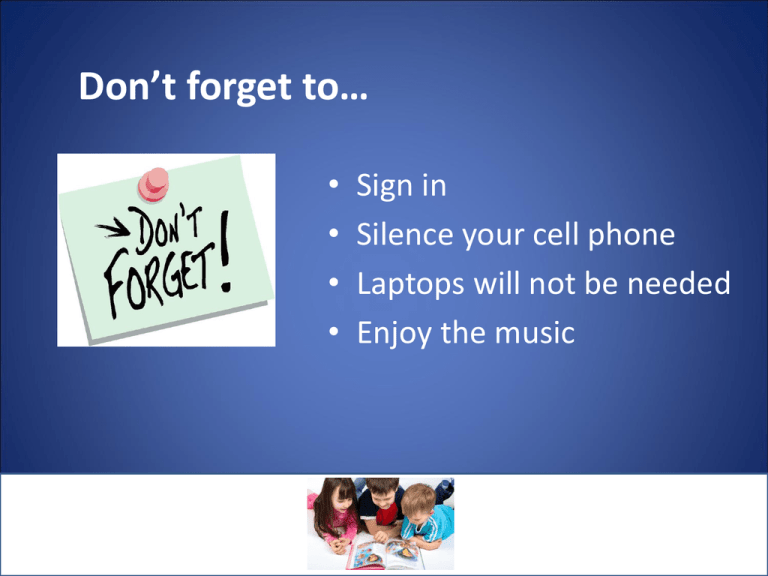
Don’t forget to… • • • • Sign in Silence your cell phone Laptops will not be needed Enjoy the music Reading Comprehension Strategies Presented by: What are Reading Comprehension Strategies? • Conscious plans that students use to determine the meaning of what they are reading • Tools that assist students in becoming purposeful, active readers Strategies for Reading Comprehension • • • • • • • Making Connections Asking Questions Visualizing/Creating Mental Images Monitoring/Clarifying Inferring/Predicting Evaluating/Analyzing Summarizing/Synthesizing Making Connections Students make personal connections and link the text they are reading to their background knowledge to enhance understanding. How Do Good Readers Make Connections? • They reflect about what the story reminds them of • They think about how the story relates to their own lives • They think about other books they have read • They make connections to real world situations Helping your Students in Making Connections • To help your students make connections while they are reading, you may try questioning strategies, such as… – What does the book remind you of? – What do you know about the book’s topic? – Does this book remind you of another book? http://reading.ecb.org/downloads/mc_MakingConnections.mp3 Asking Questions Questions allow students to understand the text on a deeper level by clarifying confusion and stimulating further interest in a topic before, during, and after a reading. How Do Good Readers Ask Questions? • Stop periodically to ensure that they understand what they are reading • Ask themselves questions about what they are reading • Discover new information with their questions • Clarify their confusion with their questions Helping your Students with Questioning • To help your students with this strategy, you may do the following: – Model questioning in your own re-reading – Ask your students to come up with questions before reading to see if it is answered within the text – Stop and make predictions – Discuss what questions the students may have after reading http://reading.ecb.org/downloads/qu_Questioning.mp3 Visualizing/Creating Mental Images Students create mental pictures and visualizations while they read to represent ideas in the text. How Do Good Readers Visualize? • • • • • Create mental pictures in their head Make the words on the page real and concrete Create a movie of the text in their head Build meaning as they visualize Create images using all of their senses Helping your Students with Visualization • To help your students visualize while they are reading, you may try the following: – Share wordless picture books – Have students tell the story – Make frequent stops while reading aloud to describe the pictures in their minds – Have students draw pictures of what they have read http://reading.ecb.org/downloads/vis_Visualizing.mp3 Monitor/Clarify Students monitor and clarify when they stop to ensure that the meaning of the text is clear to them. How Do Good Readers Monitor/Clarify? • They ask themselves if what they are reading makes sense • They re-read selections that do not make sense • They look at pictures for clues • They keep reading for context clues • Ask a friend for clarification Helping your Students with Monitoring/Clarification • To help your students with monitoring/clarification, you may ask them the following questions: – What is happening in the story? – What clues have lead you to think that? – Does that make sense? – Does this text remind you of anything you already know? Inferring/Predicting Students make inferences about the text they are reading to interpret and develop a deeper understanding of the text. How Do Good Readers Infer/Predict? • Read between the lines • Make their own discoveries without the author directly stating • Use text clues, prior knowledge, and questions to come up with a conclusion • Create meaning based on their own notions Helping your Students with Inferring/Predicting • To help your students infer/predict, you may ask the following questions: – How did you know that? – Why did you think that would happen? – What do you think this story was about? – How do you think the character feels? – Does the story remind you of anything in particular? http://reading.ecb.org/downloads/in_Inferring.mp3 Evaluating/Analyzing Students evaluate and determine the importance of what they are reading to make decisions about what information or ideas are most critical for understanding. How Do Good Readers Evaluate? • Get the bigger ideas and themes • Use text features and clues to help them figure out the important information • Look over the entire selection to get an idea of what the topic is about • Carefully highlight key information Helping your Students with Evaluating • To help your students determine the importance of reading, you may do the following: – Initiate discussion before reading – After reading, discuss important information they have learned – While reading, help your students look for clues – Pay attention to titles, headings, captions, fonts, etc… http://reading.ecb.org/downloads/ev_Evaluating.mp3 Summarize/Synthesize Students weave together what they have read with their own ideas to form new and complete thoughts during and after reading. How Do Good Readers Summarize? • Take individual pieces of information and combine them with background knowledge • Form new ideas from pieces of information • Create an original idea • See a new perspective • Combine different strategies of reading comprehension Helping your Students with Summarization • To help your students summarize, you may use the following: – Discuss current events with an emphasis on judgments and opinions – Ask questions with no clear answers – Ask, “How has your thinking changed from reading that piece?” http://reading.ecb.org/downloads/sum_Summarizing.mp3 Additional Activities to Support Reading Comprehension • Expanding Vocabulary • Thinking Maps • Helpful Resources Expanding Vocabulary Expand vocabulary by using Marzano’s Six Step Process, which will support reading comprehension. Examples of Activities to Expand Vocabulary Thinking Maps Visual representations that support the understanding of texts and may be used to support reading comprehension. Examples of Thinking Maps Helpful Resources • Into the Book Strategies for Learning http://reading.ecb.org/teacher/index.html • Strategies for Reading Comprehension http://www.readingresource.net/strategiesfo rreadingcomprehension.html • PowerPoint Games http://jc-schools.net/tutorials/ppt-games/ • Thinking Maps http://www.mdianeharrison.com/Thinking%2 0Maps.htm • Reading Comprehension Activities Packet Strategies in Action! Probably the single most important factor in a child’s initial reading instruction is his or her teacher. No books, no curriculum, no computer can replace the enormous value of good human-to-human teaching. Any Questions?? Remember… “The more that you read, the more things you will know. The more that you learn, the more places you'll go.” -Dr. Seuss

